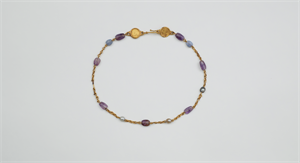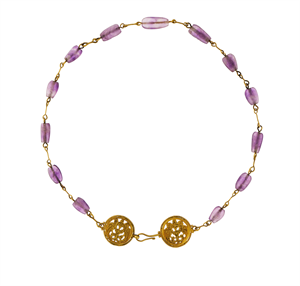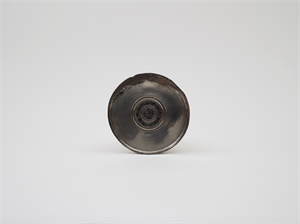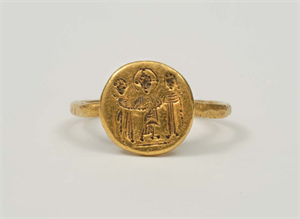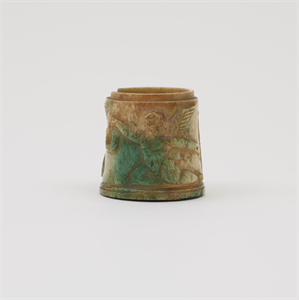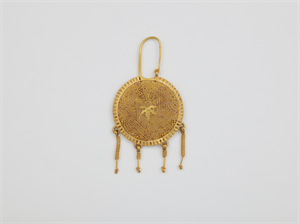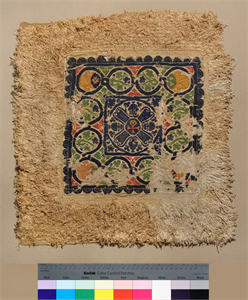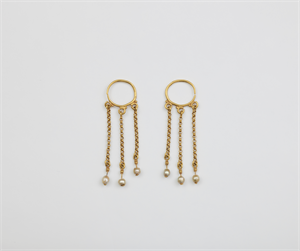 by Century
by Century
 by Culture
by Culture
 by Object Type
by Object Type
Necklace with Amethyst and Chalcedony Beads and Pearls
Early Byzantine
late 6th century - 7th century
gold and gems
BZ.1958.28
Necklace with Thirteen Beads
Early Byzantine
6th century - 7th century
gold and gems
BZ.1959.61
Plate with Monogram and Ivy Leaves
Early Byzantine
ca. 610 (early 7th century)
silver and niello
BZ.1960.60
Marriage Ring
Early Byzantine
late 6th century - 7th century
gold with niello
BZ.1961.3
Pyxis with Two Putti and Garland
Roman
1st century - 2nd century
ivory
BZ.1985.4
Earring (?) or Pendant in the form of an Openwork Roundel with Oak Leaf in Center
Early Byzantine
4th century (?)
gold
BZ.2004.13
Fragment of a Hanging or Cover
5th century - 6th century
BZ.2010.070
Pair of Earrings with Hoop and Three Chains Terminated with a Pearl
Date Unknown
pearls on gold
BZ.2015.041
Grooved Turning Key Bit Belonging to a Seal Ring (The Menil Collection, Houston X 734)
Middle Byzantine
9th century - 10th century
gold and niello
Loan.BZ.2000.001
| Showing 13 to 21 of 21 Records |
|
 by Century
by Century
